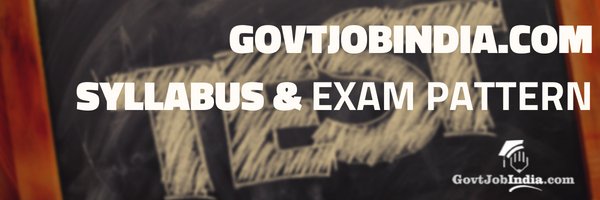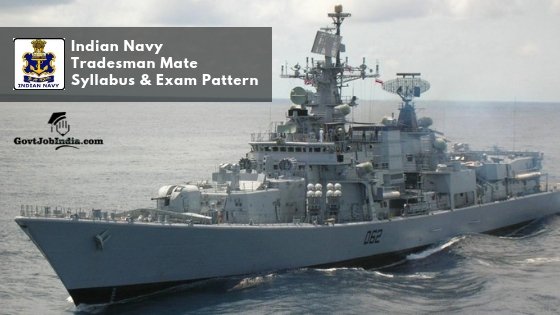BMC Sub Engineer Syllabus and Exam Pattern PDF Download for MCGM SE Recruitment 2021 – BMC Sub Engineer Study Material for Electrical, Mechanical and Civil and Architecture
 बृहन्मुंबई महानगर पालिका BMC Sub Engineer Syllabus 2021 Group B – All the candidates who are looking for the BMC Sub Engineer Syllabus and Exam Pattern are thus notified that the MCGM Sub Engineer Exam Pattern has been elaborated in the following sections.
बृहन्मुंबई महानगर पालिका BMC Sub Engineer Syllabus 2021 Group B – All the candidates who are looking for the BMC Sub Engineer Syllabus and Exam Pattern are thus notified that the MCGM Sub Engineer Exam Pattern has been elaborated in the following sections.
All the information given in this article has been borrowed from the Official Portal where the Brihanmumbai Municipal Corporation/Municipal Corporation of Greater Mumbai has given the official BMC Sub Engineer Syllabus PDF. This can be verified by going to the official BMC Website which is mcgm.gov.in.
Latest Update:
- The last date to apply online for the Municipal Corporation of Greater Mumbai (MCGM) Recruitment has extended to the not updated.
- 20% In house quota will be there for MCGM employees for the candidates applying for the post of Jr. Engineer (Civil & M&E). The detailed circular is given here- Click Here
- The minimum marks which candidates had to score for clearing the eligibility of the BMC Recruitment 2018 have been slashed. For more information, visit the BMC Sub Engineer Recruitment
Selection Process
- Exam
- Interview
(Updated)Download Greater Mumbai Municipal Corporation Sub Engineer Exam pattern
| Sr.no | Subject | Marks |
| 1 | Logical Reasoning | 20 |
| 2 | General Knowledge | 20 |
| 3 | Technical | 60 |
| Total | 100 | |
Please Note:
Since the MCGM/BMC has only come out with the Syllabus and Exam Pattern of the Technical portion, we would advise the candidates to start preparing for this at least.
As soon as the authorities release the Syllabus for the other subjects, we will update out website. Till then, we would advise the candidates to download this BMC Sub Engineer Portion 2018 onto their personal computer and start preparing!
| ⇒ Sub Engineer (Civil) Handout | Download Here |
| ⇒ Sub Engineer (Mechanical and Electrical) Handout | Download Here |
| ⇒ Sub Engineer (Architecture) Handout | Download Here |
MCGM Sub Engineer Technical Syllabus for the post of Civil Engineering
|
Technical Syllabus for the post of Mechanical and Electrical Engineering
|
BMC Sub Engineer (Architect) Technical Syllabus 20211. Regional Plan (R.P) Need of contents of Regional Plan Surveys necessary for Regional Plan Design & planning (Architectural) principle of planning Building Construction (Architectural point of view) planing 2. Development Plan (D.P.) Surveys, types, duration etc. Implementation and Financial Aspects. 3. Town Planning Scheme Concept of T.P.S Relation with D.P. Original Plot, Final Plot, Semi-final Plot Function of Arbitrator Cost of Scheme 4. Building Permission a) Building byelaws b) Development c) Document Required for development permission d) Measurement Plan e) Layout of Land f) F.S.I, TDR g) Development charge 5. Transportation Surveys Classification of Roads Public transport needs Requirement of civil aviation and Railways 6. Environment Aspects Environment Protection Acts. Surveys 7. Acts and Rules MR and TP Act 1996 Restated with D. Plan & Builds Design LA Act. 1894 Environment Act Related with Building planning.
|
⇒ Download BMC Sub Engineer Syllabus and Exam Pattern PDF 2021- Click Here
WhatsApp वर तुमच्या मित्रा सोबत नक्की Share करा
The Study Material given below contains the technical syllabus of the BMC Exam Syllabus for Civil Engineering. It also contains the MCGM Sub Engineer mechanical Syllabus along with BMC Recruitment Exam Paper Pattern for Electrical engineering as well as architecture.
Furthermore, we have also given the BMC Syllabus 2021 PDF for the post of Sub Engineer, so that you can access the syllabus even when you are offline. All the necessary details concerning the MCGM Syllabus and Exam Pattern are enumerated down below which will help you know all the information regarding the BMC Sub Engineer Exam.
The BMC Sub Engineer Recruitment Portion presented below will guide you through the process of preparing for the BMC Exam 2021, so that you will not be in need of any other MCGM Sub Engineer Study Material.

BMC Sub Engineer Recruitment – मुंबई महानगरपालिका | |
| Recruitment Board | Municipal Corporation of Greater Mumbai |
| Total Vacancies | 291 Posts |
| Location/State | Mumbai, Maharashtra |
| Category | Syllabus |
| Application Last Date | 31st December |
| Selection Process | Written Exam/ Personal Interview |
| Exam Date | To be declared |
| Admit Card release date | To be declared |
| Application Mode | Online |
| Official Website | www.mcgm.gov.in/ |
The BMC Recruitment for the post of 291 Sub Engineer vacancies saw a huge amount of applicants from not just across the state, but also across the country. This was a very prized vacancy which candidates from all across the nation were interested in. The application process of the recruitment is still on, so if you haven’t applied online for it, make sure to apply by going to the BMC Sub Engineer Recruitment Page.
So, without further ado, enlisted here are the BMC Sub Engineer Recruitment details which will be followed by the MCGM Sub Engineer Syllabus and Exam paper pattern.
Important Links
| Recruitment | View BMC Sub Engineer Recruitment notification |
| Admit Card | Download MCGM Sub Engineer Exam Admit Card |
| Previous Year Question Papers | Download BMC Previous Year Question Papers here |
| Answer Key | MCGM Sub Engineer Answer Key For BMC Recruitment Exam |
| Result | Check your BMC Recruitment Exam Result |
| Website | CLICK HERE |
Did you find this article about BMC Sub Engineer Syllabus and Exam pattern useful? If you would require this page to prepare for the exam, then make sure to bookmark this page onto your daily browser and you will never be able to lose us.
If you have a problem with coming online frequently, you should download the MCGM Sub Engineer Syllabus PDF which will help you study even when you are offline.
So, in the end, we would just ask you to subscribe to our website if you think our content might benefit you. Do not forget the name, it is GovtJobIndia.com.








